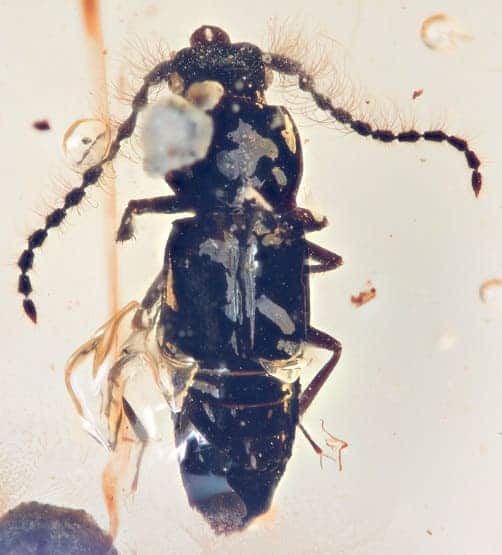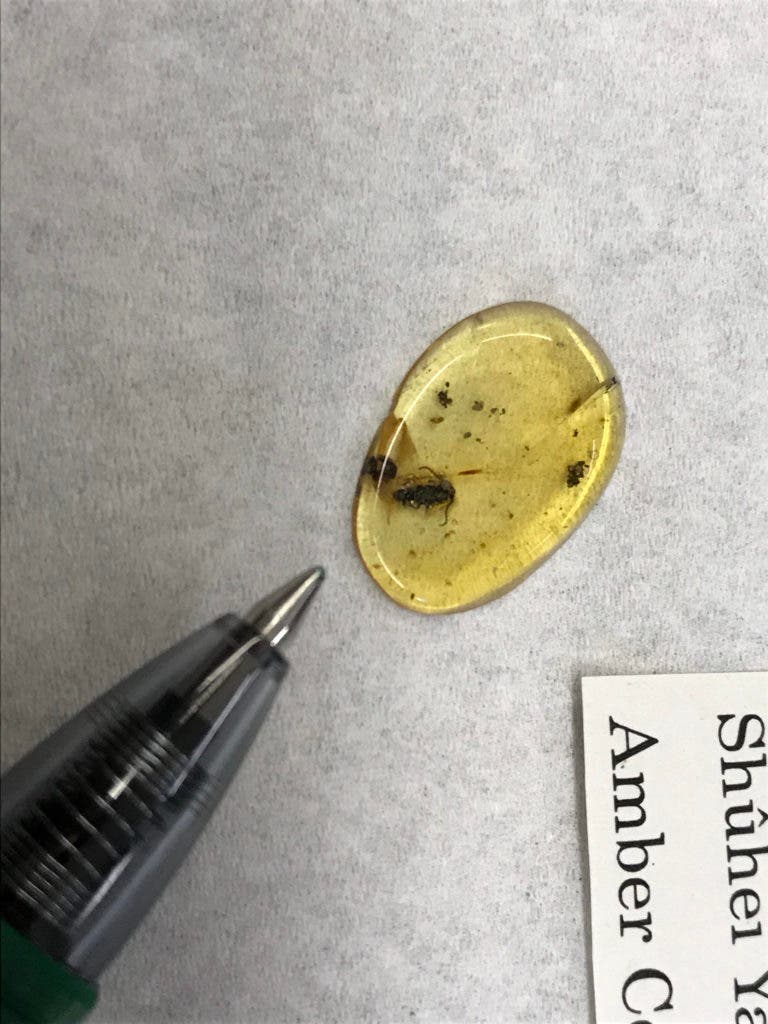Researchers analyzed a penny-sized piece of amber, finding a remarkable inclusion: a 99 million-year-old beetle, which also offers some indication on how the tectonic moved in the past hundred million years.

Amber is fossilized tree resin, but if you’d come across it in nature, you might not even realize what you were looking at — because it looks very different than it does in jewelry. Jewelry amber looks bright-yellow, transparent and beautiful, whereas “raw” amber looks, well, raw — essentially like a rock. Miners who find amber send it to professionals for processing, or, sometimes, to researchers that look for inclusions or other interesting aspects. Thankfully, this was the case with the sample above, which came from Myanmar and was sent to Shuhei Yamamoto at the Field Museum of Natural History in Chicago.
After cleaning, cutting, and polishing the sample, Yamamoto noticed something highly unusual: a previously undiscovered beetle species related to modern creatures which live under tree bark.
“This is a very rare find,” Yamamoto said, the lead author of a paper in the Journal of Systematic Palaeontology describing the new species.
While giant dinosaurs were ruling the earth and the sea, these little bugs were conquering a more mellow environment: the parts beneath the bark of rotting trees. Its long, slender antennae are a smoking gun that tells Yamamoto Propiestus lived a similar environment to today’s flat rove beetles. Its long antennae were a telltale sign of its heritage and, given its habitat, it’s understandable how it got trapped in amber in the first place.
“The antennae probably had a highly sensitive ability as a sensory organ,” Yamamoto said. Smaller hair-like structures attached perpendicular to the antennae would have increased its ability to feel out its surroundings. “There wouldn’t have been a lot of space available in the beetle’s habitat, so it was important to be able to detect everything,” he explains.

The little bug also offers some information about something much larger than itself: tectonic movement. The fossil was found in Myanmar, but its closest relatives are found in South America — which is not even close to Myanmar, in Southeast Asia. But 100 million years ago, they were much closer, tied together in a supercontinent called Gondwanaland. Gondwanaland itself eventually broke apart, but the timing is still uncertain — this new piece of evidence shows that the two geographical areas were still connected (or very close) about 100 million years ago.
“Like koalas and kangaroos today, certain animals that we think lived in Gondwanaland are only found in one part of the world. Although Propiestus went extinct long ago, our finding probably shows some amazing connections between Southern Hemisphere and Myanmar,” Yamamoto said. “Our finding fits well with the hypothesis that, unlike today, Myanmar was once located in the Southern Hemisphere.”
Was this helpful?



